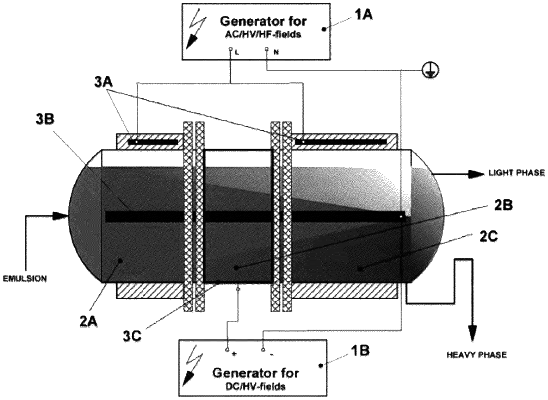| CPC B01D 17/06 (2013.01) [B03C 11/00 (2013.01); C10G 33/02 (2013.01); B03C 2201/02 (2013.01)] | 3 Claims |

|
1. A device for separating at least one emulsion, the device comprising:
at least one vessel with at least one module having at least one inlet for the at least one emulsion to be separated, at least one outlet for a separated heavy (water) phase and at least one outlet for a separated light (oil) phase, the at least one module comprising at least three sections, wherein at least two sections are HF/AC sections and at least one section is a DC section, and wherein at least one of the at least two HF/AC sections is upstream of the at least one DC section and at least one of the at least two HF/AC sections is downstream of the at least one DC section;
at least one first electrode positioned alongside the at least one module of the vessel;
at least one second electrode positioned within the at least one module;
a first generator in communication with the at least one first electrode and the at least one second electrode, the first generator configured such that an AC field is applied in the HF/AC sections at 2,000-100,000 V/m at 5,000 Hz to 200,000 Hz; and
a second generator in communication with the at least one second electrode, the second generator configured such that a DC field is applied in the DC section at 500-20,000 V/m.
|